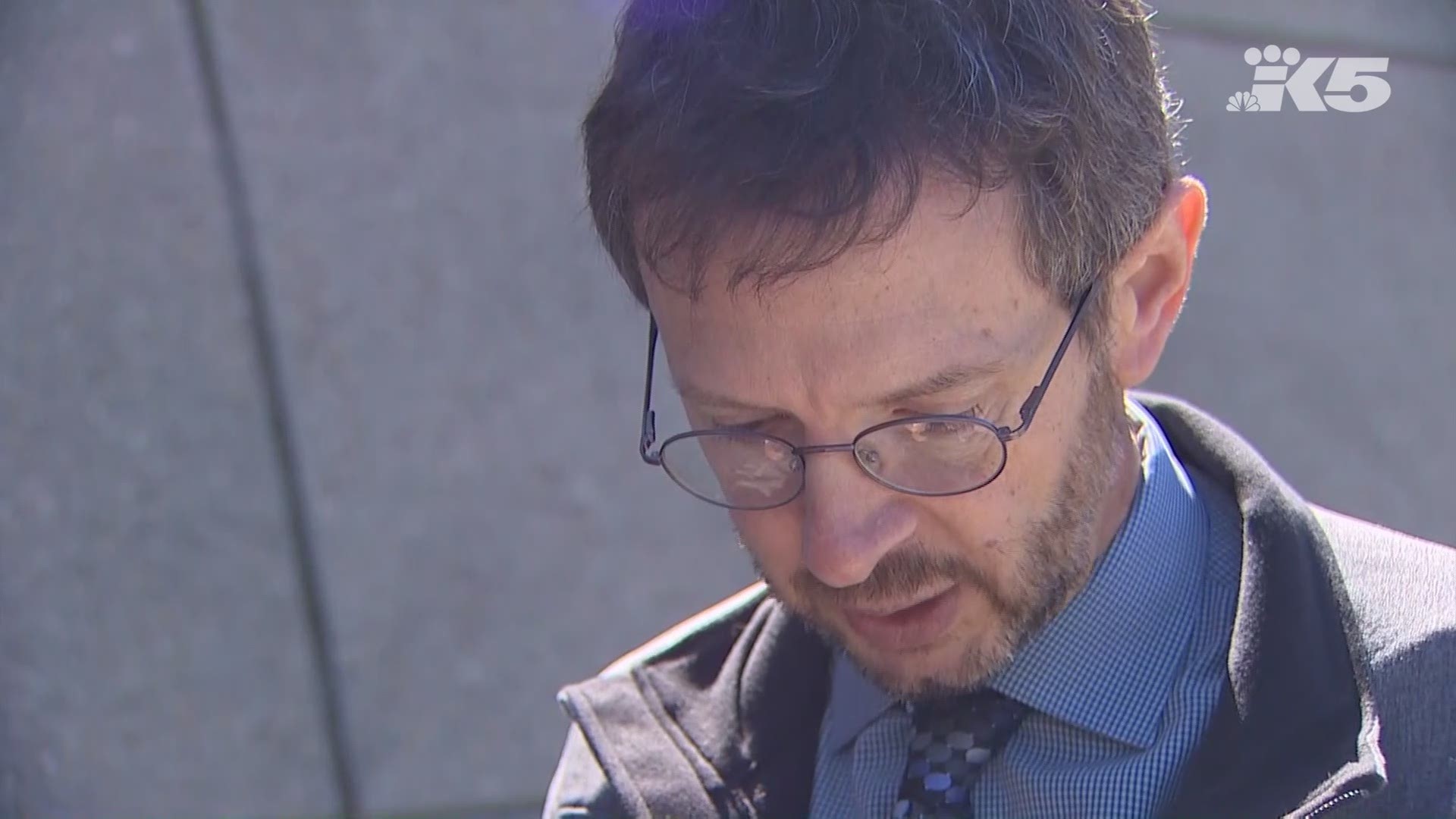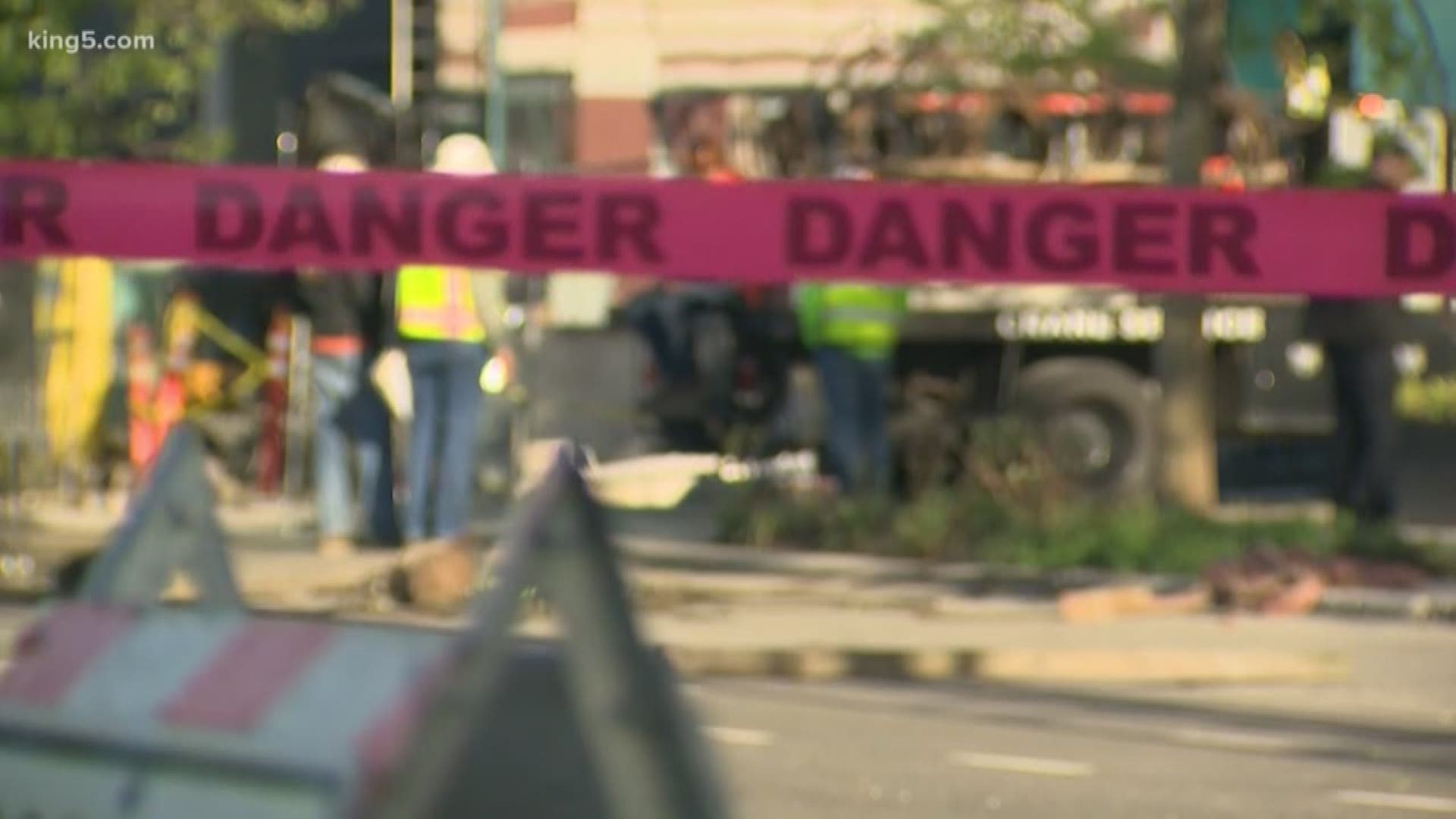Investigating what caused a crane to collapse in downtown Seattle Saturday, killing four people and injuring four others, might take six months to a year.
Experts have theorized that human error played a role in the tragedy.
Based on videos of the collapse, they said it appears workers who were disassembling the construction crane had prematurely removed pins securing the sections of the crane's mast to each other, and that could explain why the crane toppled in relatively minor wind gusts.
The Washington state Department of Labor and Industries (L&I) will head the investigation.
"We've opened investigations into four companies," Tim Church said Sunday, a spokesperson for Labor and Industries.
Church confirmed investigations into GLY Construction, subcontractors Northwest Tower Crane and Omega Morgan, and Morrow Equipment Company.
Crews worked through the weekend to map and clear the scene. Seattle police will determine if there is additional damage that’s been done to the roads.
Seattle and Washington state officials said Sunday there are no specific mandates or laws about closing roads for crane disassembly. Seattle Department of Transportation (SDOT) Director Sam Zimbabwe offered just a short “no” when the question was asked at a Sunday press conference. The Seattle Department of Construction and Inspection said it defers to SDOT about road closures.
Mercer Street, one of Seattle’s busiest roads, was wide open during the removal process on Saturday. Church said that L&I doesn’t require road closures for the crane removal.
It is likely the contractors chose Saturday as the day of the crane removal because of decreased car and pedestrian traffic, although no one could say for certain.
There have only been two crane accidents in the area in recent years. One happened when a crane in Seattle’s Belltown neighborhood malfunctioned and almost injured workers and a passing bicyclist in April 2017.
"The state Department of Labor and Industries inspects those cranes regularly," Seattle Mayor Jenny Durkan said. "The workers who work on them are very good. I think that we’ve had a good track record here. But of course we’re going to pay extra attention to make sure that the cranes that are in Seattle today are safe."
Half of the cranes in the state of Washington are in Seattle.
The state relies on 70 state-certified, private inspection companies. Those private inspectors must sign off on the cranes before assembly, after assembly on-site, and at least once a year, according to Joe Sadler of Exxel Pacific.
Sadler is Exxel Pacific’s safety director.
“The reason we have so many rules and regulations really is typically because at some point in time someone got hurt or worse,” he said.
The turning point was a deadly 2006 crane incident. It killed a man while he was inside his Bellevue apartment next to the construction site.
“It got everyone’s attention to the fact that there weren’t a lot of regulations out there,” Brian Haight, Region 8 compliance manager for The Department of Occupational Safety and Health, which is part of Washington’s Labor & Industries, said in 2017.
He said it spurred the state legislature to add regulation to the industry.
That included the multiple inspections throughout assembly and year-round.
Only 18 states and six cities require crane operator licenses, according to The Crane School.



